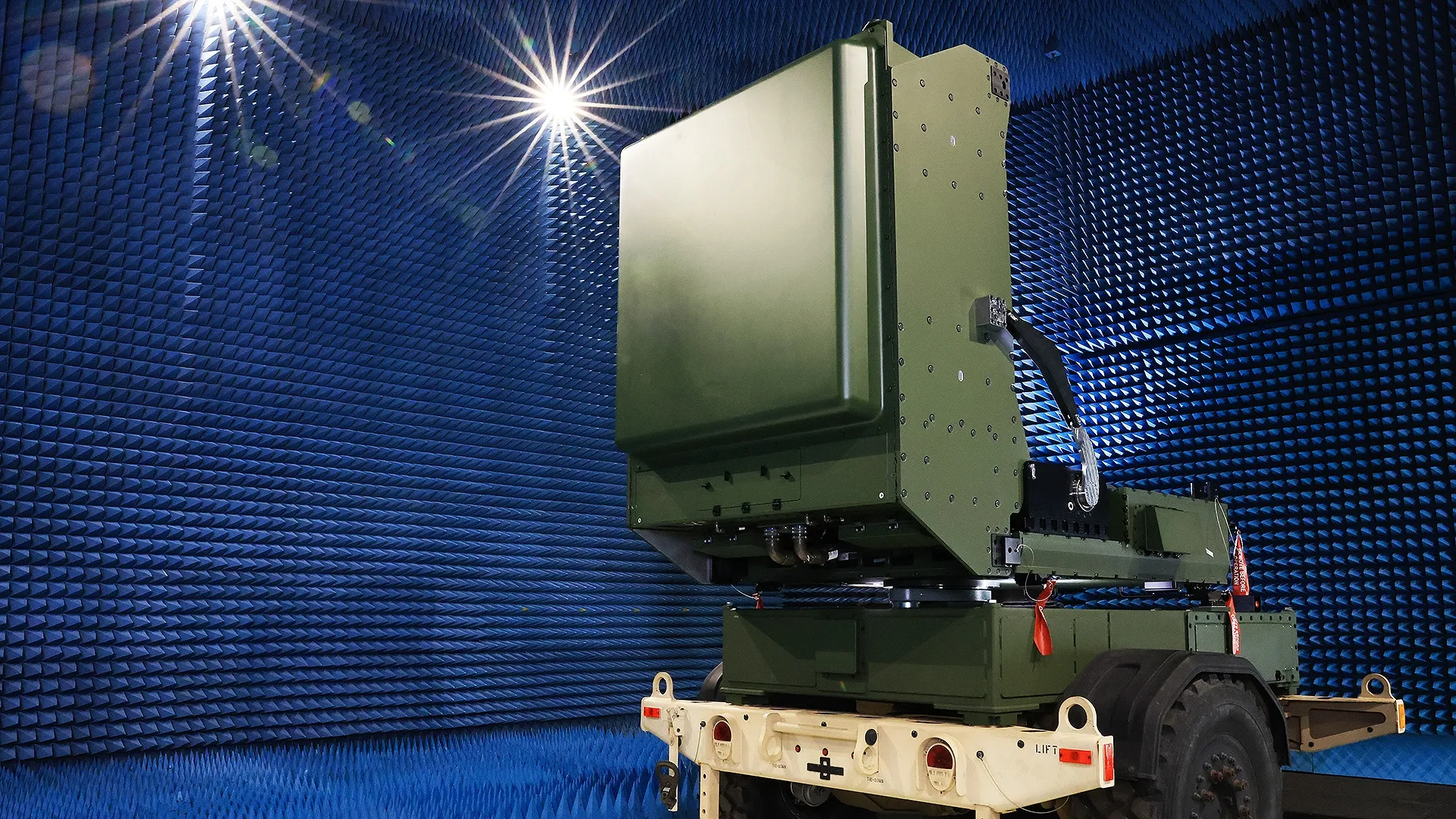La empresa estadounidense EPIRUS anunció que el US Marine Corps, comenzará a ensayar un sistema modular remolcable de Armas de Microondas de Alta Potencia (HPM), apto para acompañar las operaciones de esas tropas de rápido despliegue y altamente móviles. El sistema llamado ExDECS (Expeditionary Directed Energy Counter Swarm) permitirá a los Marines experimentar con armas de energía dirigida del tipo HPM, para hacer frente a la amenaza creciente de los enjambres de drones (Drone Swarm). El empleo de drones ha cambiado las características del combate terrestre actual y las tropas necesitan disponer de armas específicas para el rol de “Defensa Aérea Cercana” como las HPM, incluso en los menores niveles de la organización.
The U.S. Marine Corps has taken delivery of the Expeditionary Directed Energy Counter-Swarm, or ExDECS, weapon, its maker Epirus announced today to coincide with the Modern Day Marine conference in Washington, D.C. ExDECS will allow the Corps to start experiments with high-power microwave (HPM) technology in the increasingly critical low-altitude air defense (LAAD) role. This kind of counter-drone system is increasingly seen as a critical layer in force protection and something that is urgently needed to enhance current and future ground-based air defense capabilities.
ExDECS is a derivative of the Leonidas HPM-energy-based counter-drone system developed by Epirus, whose products we will revisit soon in a very in-depth story. The company delivered the first ExDECS system to the Naval Surface Warfare Center Dahlgren Division in Virginia earlier this year, where it completed government acceptance testing ahead of a planned test program.
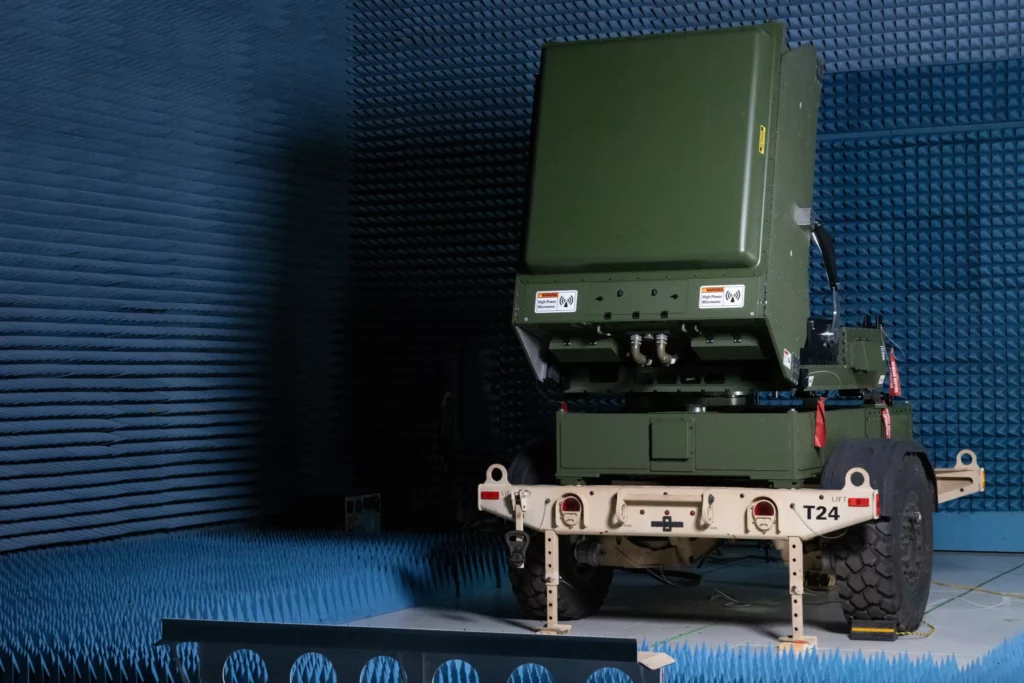
The mobile, solid-state HPM system has been developed as part of a contract awarded by the U.S. Navy’s Office of Naval Research (ONR). In September 2024, the ONR awarded Epirus an additional follow-on contract to support further testing and evaluation of the system as part of the Preliminary Evaluation of Ground-based Anti-Swarm UAS System (PEGASUS) program.
“Drone warfare is changing the fight — fast. Systems like ExDECS give Marines a decisive advantage by neutralizing multiple electronic threats at once with a single system — what we call a one-to-many capability,” said Andy Lowery, CEO of Epirus. “This delivery is a critical step toward fielding non-kinetic counter-swarm solutions that enhance the mobility, survivability, and lethality of our Marine forces.”
While the maximum effective range of ExDECS is classified, the Department of Defense has confirmed that Epirus HPM systems can affect targets at “tactically relevant ranges,” the company confirmed to TWZ. Generally, HPM systems are for point defense, effective within a handful of miles of the target.
Leonidas Expeditionary was introduced in 2024 and is the latest addition to the company’s range of scalable HPM systems for counter-electronics. ExDECS is designed to integrate with light tactical vehicles and trailers to improve expeditionary short-range air defense (SHORAD) capabilities.
HPM weapons belong to a broader category of directed-energy weapons, which also include lasers. All of them tackle their target or targets without the use of a projectile.
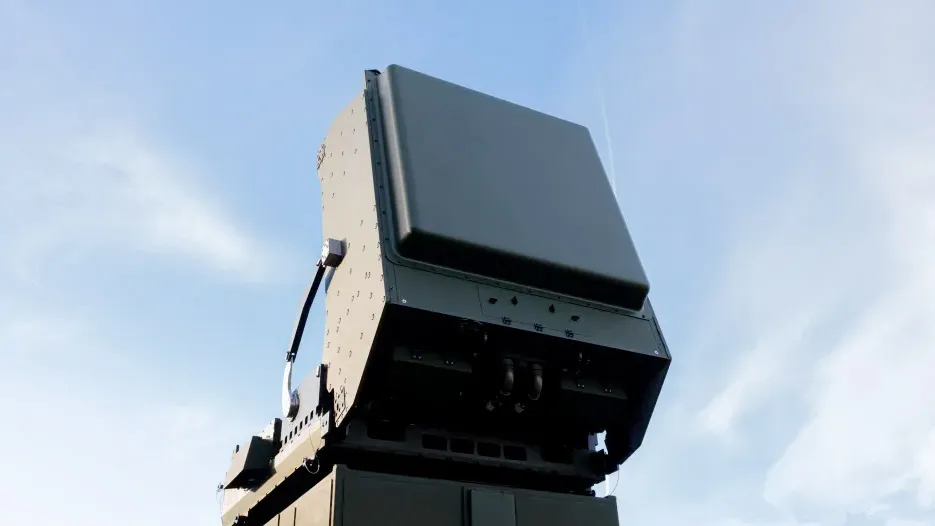
Specifically, HPM weapons use high-frequency radio waves to disrupt or disable critical electronic systems on a target — literally frying them if the weapons are powerful enough. Once targeted, aerial drones will crash or otherwise malfunction.
An HPM system’s power levels and how it focuses its beam have impacts on its range and ability to engage multiple threats at once. A wide beam means HPM weapons have greater potential to counter drone swarms than lasers, which have to focus on one target at a time.
A radiofrequency directed-energy weapon also offers notable advantages over ‘soft-kill’ options, like electronic warfare jammers, in that it can also bring down drones that are operating autonomously, or those using fiber-optic-cable guidance, by disrupting their onboard electronics.
ExDECS and the Leonidas system are primarily aimed at defeating uncrewed aircraft, including large drones or networked swarms of drones. It could also potentially be employed against more traditional aircraft, as well as low-flying cruise missiles, and even threats on the ground. The U.S. Army previously acquired and field-tested a microwave weapon ostensibly designed for non-lethal crowd-control use.
Like a laser, an HPM weapon is also cheap to use. Epirus estimates that defeating a drone with ExDECS costs just five cents. This becomes an even more important factor when faced with drone swarms, which a system like ExDECS is optimized for. As an Epirus spokesperson told TWZ: “It’s not about targeting one drone at a time — it’s about affecting everything within the volume of space covered by our electronically scanned array.”
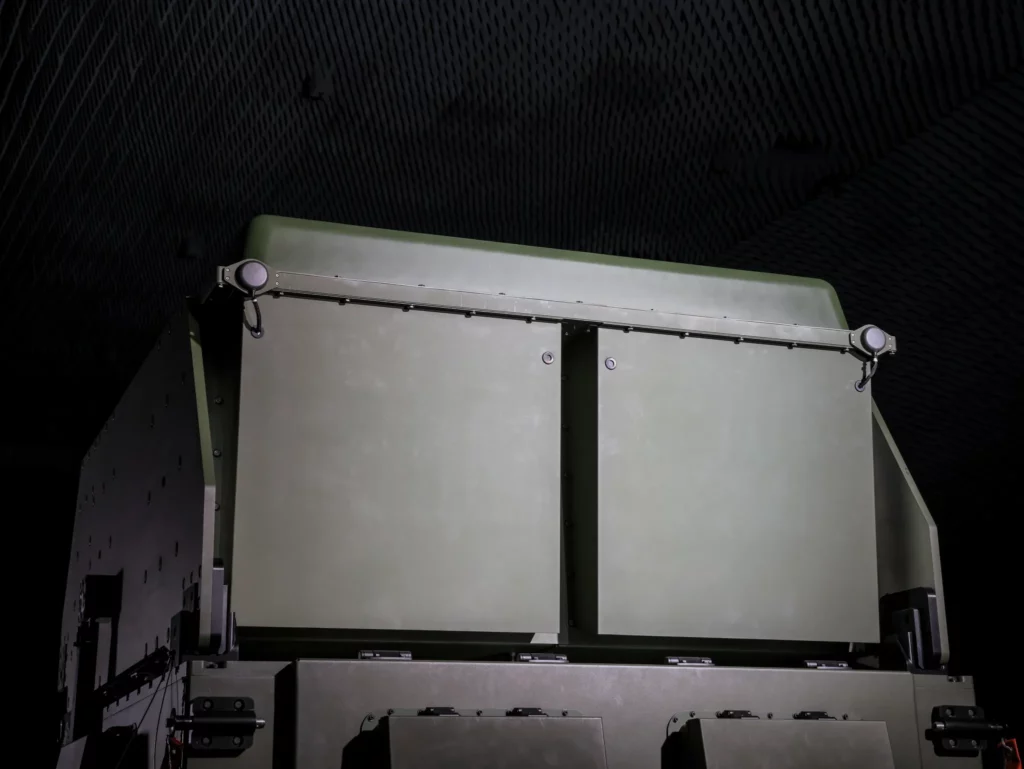
Epirus previously told TWZ that the technology behind Leonidas makes it particularly efficient since it uses “artificial intelligence-controlled solid-state power amplifiers to achieve extremely high levels of power output.” The company says this makes the core components of this directed-energy weapon highly scalable, as well.
As we have discussed before, HPM directed-energy weapons are an area in which the U.S. military, including the Navy, and other armed forces around the world are currently investing.
Epirus is among the leading players in this field, with its Leonidas having previously been integrated on the Stryker armored fighting vehicle. Other examples include the Tactical High-power Operational Responder, also known as THOR, a containerized counter-drone system that the U.S. Air Force has been testing. Outside the United States, systems include the British Army’s Radio Frequency Directed Energy Weapon demonstrator, or RF DEW, which has demonstrated the ability to bring down a swarm of drones during trials, which you can read about here.
As for the Marine Corps, the service is forging ahead with plans to expand its counter-drone strategy, with a wide variety of systems, from vehicle-mounted solutions down to infantry-operated ones.
These include the vehicle-based Marine Air Defense Integrated System, or MADIS, and the lighter L-MADIS. Both these systems use electronic jamming to disrupt enemy drone communications, but they can also be used in conjunction with kinetic effectors. In MADIS, the vehicles are provided with 30mm cannons and M240C coaxial machine guns, while L-MADIS can be teamed with shoulder-fired FIM-92 Stinger surface-to-air missiles.
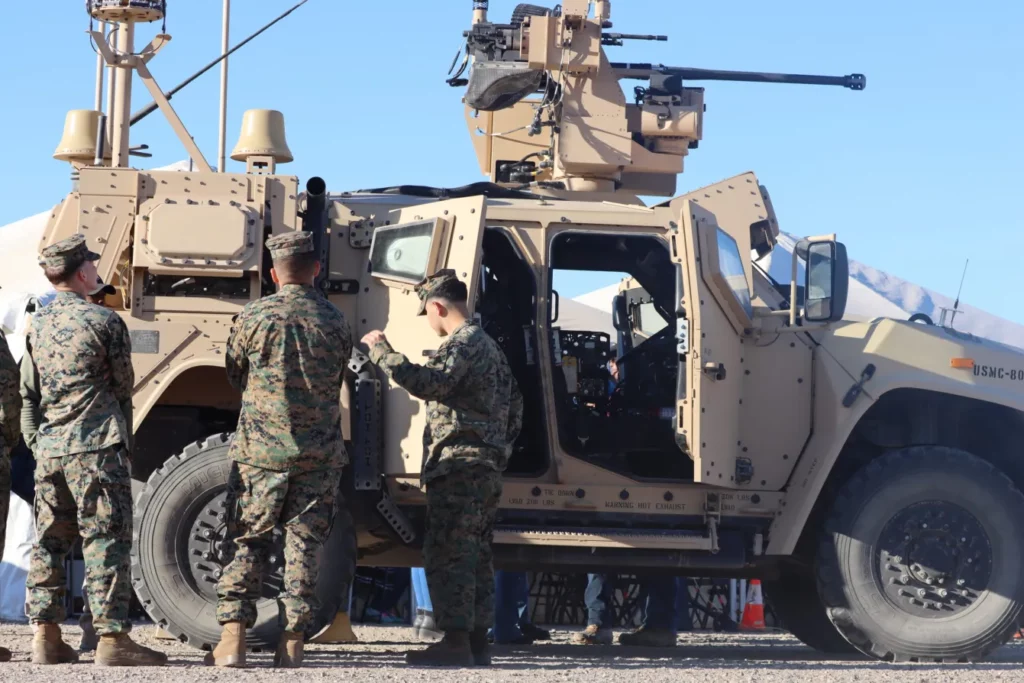
An early version of L-MADIS made headlines in 2019 when it shot down an Iranian drone from the deck of the amphibious assault ship USS Boxer during its operational debut. Since ExDECS is trailer-based, it could also be deployed aboard warships in this way.
While MADIS and L-MADIS represent the initial effort to bolster the counter-drone capabilities of Marine Corps low-altitude air defense battalions, the service is also working on a broader, and more nebulous, effort that aims to give every Marine access to drone defense and detection capabilities. You can read more about this plan here.
Another part of the Marine Corps’ counter-drone strategy involves installation defense. This involves weapons or technologies that can protect Marine Corps bases and facilities from hostile drones, with a focus on using non-kinetic means of disrupting drones or bringing them down. This has seen Counter small Unmanned Aircraft Systems (I-CUAS) installed at Marine bases.
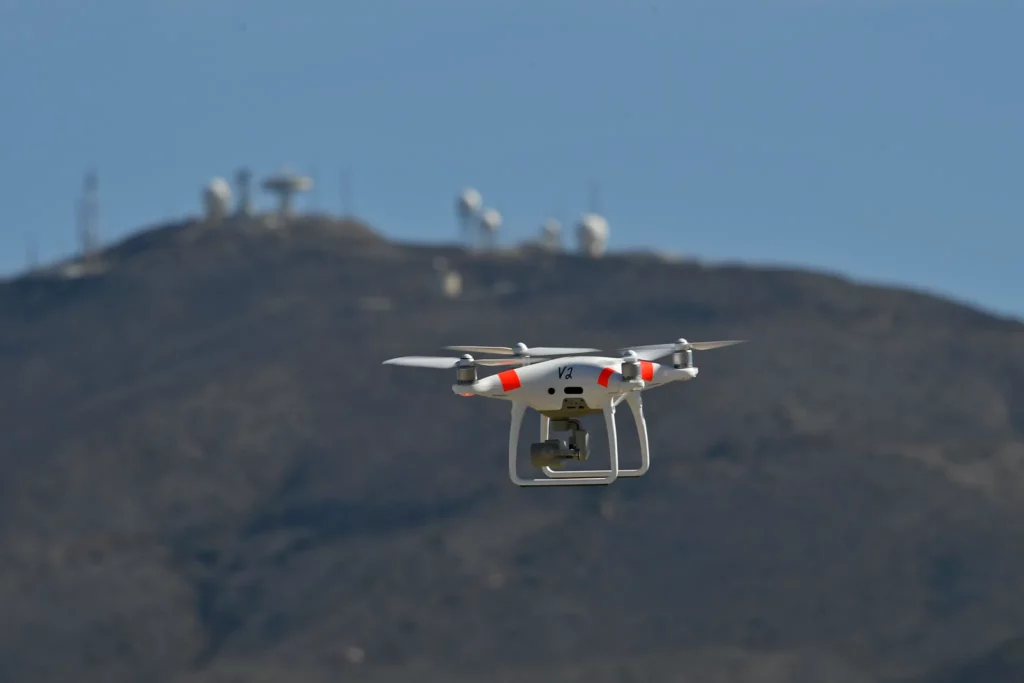
With drones becoming better hardened against electronic countermeasures and jamming, and increasingly autonomous, counter-drone strategies are made more complicated. A fast-evolving threat means that a broad range of countermeasures is needed to keep pace, in what is a potentially deadly cat-and-mouse game. Now, with the receipt of the ExDECS, the Marines are ready to start trials with this HPM technology.
Fuente: https://www.twz.com

